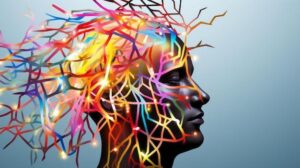
Education Literacy: Nurturing Minds, Building Futures
Education literacy is not just about reading and writing; it’s about empowering individuals with the knowledge and skills to navigate the complexities of the modern world. In an era where information is abundant and technology is rapidly advancing, being educationally literate is more crucial than ever.
Understanding Education Literacy
Defining Education Literacy
Education literacy encompasses a broad range of skills beyond the traditional understanding of literacy. It involves not only the ability to read and comprehend but also critical thinking, problem-solving, and digital literacy. This multifaceted approach ensures that individuals can adapt to the evolving demands of the information age.
Key Components of Education Literacy
Reading and Comprehension Skills
At the core of education literacy lies the proficiency in reading and understanding various forms of content. A literate individual can extract meaningful information from written materials, enabling them to stay informed and make informed decisions.
Critical Thinking and Problem-Solving
Education literacy goes beyond rote memorization. It emphasizes the development of critical thinking skills, enabling individuals to analyze situations, evaluate information, and formulate effective solutions to problems.
Digital Literacy
In a world driven by technology, digital literacy is a crucial aspect of education literacy. It involves the ability to use digital tools, navigate online platforms, and critically evaluate digital content.
Challenges in Education Literacy
Disparities in Access to Quality Education
One of the significant challenges in promoting education literacy is the unequal access to quality education. Socioeconomic factors, geographical location, and infrastructure limitations contribute to disparities in educational opportunities.
Socioeconomic Factors Influencing Literacy Rates
Poverty, cultural norms, and societal structures can impede efforts to improve education literacy. Addressing these underlying socioeconomic factors is essential for creating a more inclusive educational landscape.
Impact of Education Literacy on Individuals
Improved Career Opportunities
Education literacy opens doors to a myriad of career opportunities. It equips individuals with the skills and knowledge required in today’s job market, enhancing their employability and career prospects.
Enhanced Decision-Making Skills
Literate individuals are better equipped to make informed decisions. Whether it’s choosing a career path, participating in civic activities, or managing personal finances, education literacy plays a pivotal role in shaping well-rounded individuals.
Role of Technology in Education Literacy
Online Learning Platforms
The digital revolution has transformed education delivery. Online learning platforms provide accessible and flexible options for individuals seeking to enhance their education literacy.
Digital Resources for Educational Purposes
From e-books to interactive educational apps, digital resources play a vital role in promoting education literacy. They provide diverse learning opportunities and cater to different learning styles.
Initiatives and Programs Promoting Education Literacy
Government-Led Initiatives
Governments worldwide recognize the importance of education literacy and have implemented various programs to address the issue. These initiatives often focus on improving infrastructure, teacher training, and curriculum development.
Non-Profit Organizations Working Towards Literacy
Numerous non-profit organizations are dedicated to promoting education literacy. Through partnerships with communities and governments, these organizations work towards creating sustainable solutions to literacy challenges.
The Connection Between Education Literacy and Economic Development
Building a Skilled Workforce
Education literacy contributes significantly to building a skilled and adaptable workforce. This, in turn, enhances a nation’s economic competitiveness on the global stage.
Fostering Innovation and Creativity
An educationally literate population is more likely to contribute to innovation and creativity. Education literacy encourages individuals to think outside the box, driving progress in various fields.
Global Perspectives on Education Literacy
Comparing Literacy Rates Across Countries
While progress has been made globally, significant disparities in literacy rates persist. Examining these variations provides insights into the factors influencing education literacy on a global scale.
Success Stories and Best Practices
Highlighting success stories and best practices from countries that have successfully tackled literacy challenges can inspire effective strategies for others.
Addressing Gender Disparities in Education Literacy
Challenges Faced by Women in Accessing Education
Gender disparities in education persist, with women often facing unique challenges in accessing educational opportunities. Addressing these challenges is crucial for achieving gender equality in literacy.
Initiatives Promoting Gender Equality in Literacy
Numerous initiatives and programs aim to bridge the gender gap in education literacy. These efforts focus on creating a supportive environment for women to pursue education.
Innovations in Teaching Methods for Improved Literacy
Adaptive Learning Technologies
Incorporating technology in education through adaptive learning technologies personalizes the learning experience, catering to individual needs and promoting better literacy outcomes.
Incorporating Real-World Applications in Education
Linking education to real-world applications enhances engagement and fosters a deeper understanding of concepts. Practical, hands-on learning experiences contribute to improved education literacy.
The Future of Education Literacy
Trends Shaping the Future of Education
As technology continues to evolve, so does the landscape of education. Trends such as virtual reality in classrooms, personalized learning paths, and the integration of artificial intelligence are shaping the future of education literacy.
Continuous Learning in the Digital Age
Education literacy is not a one-time achievement but a lifelong journey. Embracing continuous learning in the digital age ensures that individuals remain adaptable and equipped to navigate an ever-changing world.
Measuring Education Literacy: Metrics and Indicators
Quantitative and Qualitative Measures
Measuring education literacy requires a combination of quantitative and qualitative metrics. Standardized tests, literacy rates, and qualitative assessments contribute to a comprehensive understanding of literacy levels.
Assessing the Effectiveness of Literacy Programs
Evaluating the impact of literacy programs is essential for refining and improving educational strategies. Monitoring and assessment mechanisms help identify successful interventions and areas for improvement.
Community Involvement in Promoting Education Literacy
Importance of Local Support
Community involvement is crucial in promoting education literacy. Local support systems, including parents, community leaders, and volunteers, play a vital role in creating a conducive learning environment.
Volunteer Programs and Community Engagement
Volunteer programs that engage community members in education initiatives contribute to a collaborative approach to promoting literacy. These programs foster a sense of shared responsibility for education.
Conclusion
In conclusion, education literacy is the cornerstone of individual empowerment and societal progress. By addressing challenges, leveraging technology, and fostering community involvement, we can collectively work towards a future where education literacy is accessible to all.
https://projectworking0.blogspot.com/2023/11/a-roadmap-to-academic-achievement.html

